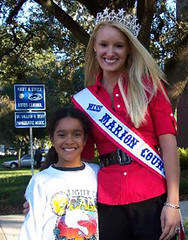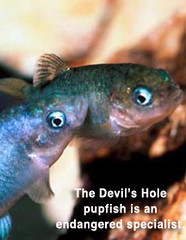It has been four long months since Now Is Gone by Geoff Livingston with Brian Solis first landed on Amazon and bookstore shelves. That’s a long time in the world of new media, making me wonder whether another review serves any real purpose, especially from someone who was included.
Yeah, about that. When Livingston visited us in Vegas, I told him I would have to ding my informal poll’s inclusion in the book, given how it is presented. I might as well start there. Sure, poll respondents called the Wal-Mart flog the biggest social media transgression to date (36 percent), but only 23 people voted.
Nine opinions is hardly as valid as it seems in print. What’s also missing is that I followed up on the subject, stating that the poll participants were a bit off: John Mackey and Julie Roehm had much larger lapses in ethical judgments. The Wal-Mart flog merely stands out because it was perpetrated by a number of people who knew better, and could have been avoided by the tiniest of disclosures.
This doesn’t really detract from the book; it’s just something to keep in mind. Like all books on new media (and everything else for that matter), sourcing the original content is important because, in understanding the greater context of the conversation, readers may come up with different conclusions than those laid out before them.
Livingston does one of the best jobs in helping people find such content, citing direct links that can be easily tracked back to the source. It makes sense.
Why Now Is Gone Works
Now Is Gone is a book that attempts a daunting task and mostly succeeds. It captures new media conversations by communication leaders as it occurred. It’s something David Meerman Scott did with The New Rules of Marketing and PR. For this reason alone, Now Is Gone is exactly what it says it is: a primer on new media for executives and entrepreneurs, people who are starting to realize they need to catch up on several months or years worth of conversation.
Livingston and the forward by Solis do a good job in presenting this, providing dozens of lessons learned, best practices, and case studies. It is often encapsulated into sound advice bites — “one new thing new media creators can learn from traditional media outlets is the creation of phenomenal content can be targeted toward a particular community” — which rightfully points to an idea that new media doesn’t require trickery as much as honest, targeted content.
Another common theme is how new media often requires active participation. Case in point: Livingston was one of several people who encouraged me to participate across more social networks than I ever intended. He’s very, very good at it (I'm just okay). He may even be one of the best at it, because he practices what he preaches…
“Social Networks that feature opt-in friends or followers can be great ways to engage sub-communities outside of a corporate social media initiative. By building value for these contacts in a participation-oriented, value-building manner, organizations can intelligently build an extended community of brand loyalists.” — Now Is Gone.
While it’s true this is sometimes time-consuming, time management and targeted participation makes the return well worth the effort. Coming away from reading Now Is Gone for the second time, it also reinforces how social networking may even be more important than a blog in that it exposes the participant to a bigger world view. It’s not all that different from participating in a professional organization on a local level. Sure, the lines are blurred and the network is bigger, but the sociology is the same.
Now Is Gone doesn't stop there. It also works hard to prove that social networks and social media cannot be ignored, no matter how much people think they can be. It is in this topic that Livingston and Solis both make their best cases for the idea that new media is changing marketing, advertising, and public relations in ways that no one expected.
They are right, even if some of the changes seem to be taking us back to the golden era of advertising when people like Ogilvy, Polykoff, Manley, and a slew of others knew that effective copywriting was all about engaging consumers in conversation. It’s the conversation, not the art or price point alone, that changes behavior.
A Cautionary Note About New Media Books
In addition to the rush to market, which sometimes leaves communication colleagues miffed by rough writing, there is something to keep in mind when reading any book about new media. And that is... it's new media.
It’s so new that some social media proponents struggle with one critical piece of wisdom: the work they are doing today is important, but it may not be strong enough to make them immortal or any more correct in being among the first. The scientific field is much more versed in working in such an environment. More than one scientist has experienced a moment when their biggest contribution is proven to be slightly flawed on the front end, making an entire volume of work invalid.
The Permian-Triassic extinction event about 250 million years ago comes to mind. There were dozens of theories floating around about the extinction for decades, ranging from large and multiple impacts and increased volcanism to methane releases from the sea floor.
However, with a single new discovery, some of these theories (and theories built on top of these theories) were suddenly left behind as entire volumes of research needed to be rewritten. The only difference, it seems to me, is that scientists are a bit more prepared for this to happen. Social media proponents? I'm not always sure they are.
Given how often I see some write that we “don’t need to reinvent the wheel,” I’m unconvinced that they are ready for for sweeping changes that occur when the wheel is reinvented. If there wasn't a need to reinvent wheels, we'd still have giant log rollers under our cars and trucks, Flinstone style. And we certainly wouldn't need new media.
Of course, this isn’t a criticism of the book. This is an area where Livingston always stands out. He allows the conversation to speak for itself, perfectly content to see it disproved, overturned by new ideas, or evolve in ways that early pioneers never intended.
You can see some of this happen in real time on the Now Is Gone blog. It’s a great read, with multiple authors picking up where the book leaves off.

Yeah, about that. When Livingston visited us in Vegas, I told him I would have to ding my informal poll’s inclusion in the book, given how it is presented. I might as well start there. Sure, poll respondents called the Wal-Mart flog the biggest social media transgression to date (36 percent), but only 23 people voted.
Nine opinions is hardly as valid as it seems in print. What’s also missing is that I followed up on the subject, stating that the poll participants were a bit off: John Mackey and Julie Roehm had much larger lapses in ethical judgments. The Wal-Mart flog merely stands out because it was perpetrated by a number of people who knew better, and could have been avoided by the tiniest of disclosures.
This doesn’t really detract from the book; it’s just something to keep in mind. Like all books on new media (and everything else for that matter), sourcing the original content is important because, in understanding the greater context of the conversation, readers may come up with different conclusions than those laid out before them.
Livingston does one of the best jobs in helping people find such content, citing direct links that can be easily tracked back to the source. It makes sense.
Why Now Is Gone Works
Now Is Gone is a book that attempts a daunting task and mostly succeeds. It captures new media conversations by communication leaders as it occurred. It’s something David Meerman Scott did with The New Rules of Marketing and PR. For this reason alone, Now Is Gone is exactly what it says it is: a primer on new media for executives and entrepreneurs, people who are starting to realize they need to catch up on several months or years worth of conversation.
Livingston and the forward by Solis do a good job in presenting this, providing dozens of lessons learned, best practices, and case studies. It is often encapsulated into sound advice bites — “one new thing new media creators can learn from traditional media outlets is the creation of phenomenal content can be targeted toward a particular community” — which rightfully points to an idea that new media doesn’t require trickery as much as honest, targeted content.
Another common theme is how new media often requires active participation. Case in point: Livingston was one of several people who encouraged me to participate across more social networks than I ever intended. He’s very, very good at it (I'm just okay). He may even be one of the best at it, because he practices what he preaches…
“Social Networks that feature opt-in friends or followers can be great ways to engage sub-communities outside of a corporate social media initiative. By building value for these contacts in a participation-oriented, value-building manner, organizations can intelligently build an extended community of brand loyalists.” — Now Is Gone.
While it’s true this is sometimes time-consuming, time management and targeted participation makes the return well worth the effort. Coming away from reading Now Is Gone for the second time, it also reinforces how social networking may even be more important than a blog in that it exposes the participant to a bigger world view. It’s not all that different from participating in a professional organization on a local level. Sure, the lines are blurred and the network is bigger, but the sociology is the same.
Now Is Gone doesn't stop there. It also works hard to prove that social networks and social media cannot be ignored, no matter how much people think they can be. It is in this topic that Livingston and Solis both make their best cases for the idea that new media is changing marketing, advertising, and public relations in ways that no one expected.
They are right, even if some of the changes seem to be taking us back to the golden era of advertising when people like Ogilvy, Polykoff, Manley, and a slew of others knew that effective copywriting was all about engaging consumers in conversation. It’s the conversation, not the art or price point alone, that changes behavior.
A Cautionary Note About New Media Books
In addition to the rush to market, which sometimes leaves communication colleagues miffed by rough writing, there is something to keep in mind when reading any book about new media. And that is... it's new media.
It’s so new that some social media proponents struggle with one critical piece of wisdom: the work they are doing today is important, but it may not be strong enough to make them immortal or any more correct in being among the first. The scientific field is much more versed in working in such an environment. More than one scientist has experienced a moment when their biggest contribution is proven to be slightly flawed on the front end, making an entire volume of work invalid.
The Permian-Triassic extinction event about 250 million years ago comes to mind. There were dozens of theories floating around about the extinction for decades, ranging from large and multiple impacts and increased volcanism to methane releases from the sea floor.
However, with a single new discovery, some of these theories (and theories built on top of these theories) were suddenly left behind as entire volumes of research needed to be rewritten. The only difference, it seems to me, is that scientists are a bit more prepared for this to happen. Social media proponents? I'm not always sure they are.
Given how often I see some write that we “don’t need to reinvent the wheel,” I’m unconvinced that they are ready for for sweeping changes that occur when the wheel is reinvented. If there wasn't a need to reinvent wheels, we'd still have giant log rollers under our cars and trucks, Flinstone style. And we certainly wouldn't need new media.
Of course, this isn’t a criticism of the book. This is an area where Livingston always stands out. He allows the conversation to speak for itself, perfectly content to see it disproved, overturned by new ideas, or evolve in ways that early pioneers never intended.
You can see some of this happen in real time on the Now Is Gone blog. It’s a great read, with multiple authors picking up where the book leaves off.






















